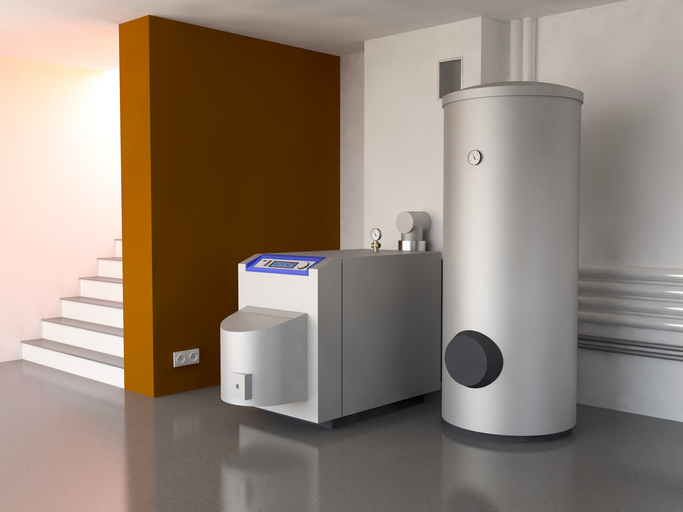You don’t want to face a chilly winter day in Frederick, MD, with a furnace that has run out of heating oil. Before you reach for the emergency hotline or pile on extra blankets, consider that you can restore warmth to your home by bleeding and restarting your furnace yourself. But first, you’ll need to schedule a heating oil delivery. After you receive your heating oil delivery, you’ll be able to restart your furnace. In this comprehensive step-by-step guide, we will walk you through the process, ensuring you enjoy a warm and comfortable house in no time.
Must Read Before You Begin
The only type of furnace you can bleed and restart is an oil furnace. If you have a gas furnace, or you aren’t sure what kind of furnace you have, don’t try to bleed the heating system yourself. If at any point during the process you feel unsure of what’s happening, stop, turn off the furnace and call a heating service professional.
You’re dealing with components that get extremely hot and connect to electricity. It can be dangerous to work on a furnace by yourself. Bleeding the furnace shouldn’t put you in any danger, but it’s better to focus on your safety than to start a project you’re not sure about just because you want the heating system working again.
A homeowner can successfully learn to complete a project like bleeding and restarting an oil furnace, but you must feel confident that you know what you’re doing. People who are experienced with such do-it-yourself projects will probably be able to bleed and restart the furnace without too much of an issue. People who rarely do this kind of work around the house should let a heating service professional handle it. You can always learn if you want to, but trying it alone the first time isn’t a good idea if you don’t know what to do.
Gather the Necessary Tools for Bleeding and Restarting the Oil Furnace
Before you begin, assemble the tools and materials you’ll need:
- Screwdriver or wrench.
- Small container or bucket.
- Pair of safety gloves and safety glasses.
- Can of heating oil.
Safety First: Turn Off the Power
Safety is paramount when dealing with heating systems. Start by turning off the power to your furnace. Locate the power switch on or near the furnace, and flip it to the “off” position. If there isn’t a designated switch, shut off the power at the circuit breaker.
Locate the Bleeder Valve in Your Oil Furnace
Your oil furnace should have a bleeder valve, often located near the fuel line or oil pump. Consult your furnace’s manual if you’re unsure about its location. The valve is typically a small hexagonal or square nut.
Put on Safety Gear
Wearing safety gloves and glasses is crucial when working with heating oil. It can be messy, and safety gear will protect your hands and eyes from any spills.
Place a Container Under the Valve
Position your container or bucket under the bleeder valve to catch any spilled oil. This will prevent oil from dripping onto your floor and creating a mess.
Open the Bleeder Valve
Using your screwdriver or wrench, slowly open the bleeder valve counterclockwise. Be prepared for a hiss of air followed by a stream of oil. Let the air and residual oil flow until you see a steady stream of pure oil without any air bubbles. This process is known as bleeding the line.
Close the Bleeder Valve
Once you’ve eliminated all the air from the line and have a steady flow of oil, carefully close the bleeder valve by turning it clockwise. Be gentle, as overtightening can damage the valve.
Replace the Fuel Filter
Over time, running out of heating oil can cause sediment and debris to accumulate in the fuel filter. To ensure optimal performance, it’s a good idea to replace the fuel filter at this point. Refer to your furnace’s manual for guidance on locating and changing the filter.
Refill the Oil Tank
With the bleeder valve closed and the new filter in place, it’s time to refill your oil tank. Use a can of heating oil or contact your oil supplier for a delivery. Be cautious not to overfill the tank; most tanks have a gauge to indicate the proper level.
Restart the Oil Furnace
Now that you’ve bled the line, replaced the filter and refilled the tank, you’re ready to restart your furnace and restore warmth to your home. Turn the power back on at the furnace or circuit breaker, then set your thermostat to a higher temperature to initiate the heating process. Your furnace should now ignite and begin distributing warm air.
FAQ: Is It Safe to Refill and Restart My Oil Furnace Myself?
Refilling an oil furnace is a task that homeowners can generally undertake themselves, but it requires careful attention to safety precautions and technical details. It’s safe for a homeowner to refill their oil furnace if they have a basic understanding of the process, the right tools and the confidence to follow instructions diligently.
While refilling the oil tank is a manageable DIY task, other aspects like troubleshooting, dealing with complex issues or performing maintenance beyond just refilling may require professional help. A qualified service technician can diagnose and fix any underlying problems, ensure the system is operating efficiently and replace components like filters. Additionally, if a homeowner feels uncomfortable or uncertain about any part of the process, it’s always a good idea to seek professional assistance. Safety and the efficient functioning of the heating system should be top priorities, and it’s essential to strike the right balance between DIY efforts and professional expertise.
How to Order Heating Oil Online for Quick Delivery
Ordering heating oil for your home or business is now more convenient than ever with the availability of online ordering services. Here’s a quick guide on how to do it:
Find a Reliable Supplier such as Griffith Energy Services Inc.:Look for a well-reviewed supplier that offers online ordering. Make sure they serve your area and check their delivery options.
By following these steps, you can smoothly and efficiently order heating oil online and have it delivered to your doorstep without hassle.
Determining the Cause of an Outage for Oil Furnace Restart
Before rebooting your oil furnace, it’s crucial to pinpoint the exact reason it stopped functioning. This step ensures that you address any underlying issues preventing similar occurrences in the future.
Planned Shutdowns: If the outage was scheduled due to seasonal adjustments or maintenance, you’re generally clear to restart without extra steps. These planned stops usually mean the system is in optimized condition.
Fuel Levels: A common reason for an unplanned furnace halt is an empty fuel tank. Before you initiate a restart, verify that the fuel tank is adequately refilled. Operating on low fuel can cause air to enter the system, leading to potential operational issues.
By methodically assessing the reason behind the shutdown, you safeguard the furnace against potential damage and ensure a smooth and efficient restart.
Running out of heating oil is undoubtedly inconvenient, but with the right tools and a methodical approach, you can bleed and restart your furnace on your own. Remember to prioritize safety throughout the process, from wearing safety gear to turning off the power. By following this step-by-step guide, you can save yourself from chilly discomfort and costly service calls, ensuring a warm and cozy home even during the coldest winter days in Frederick, MD. Contact Griffith Energy Services to schedule a heating oil delivery or furnace repair. We can also advise you on how to bleed and restart your furnace or handle the job for you.
Image provided by flickr




